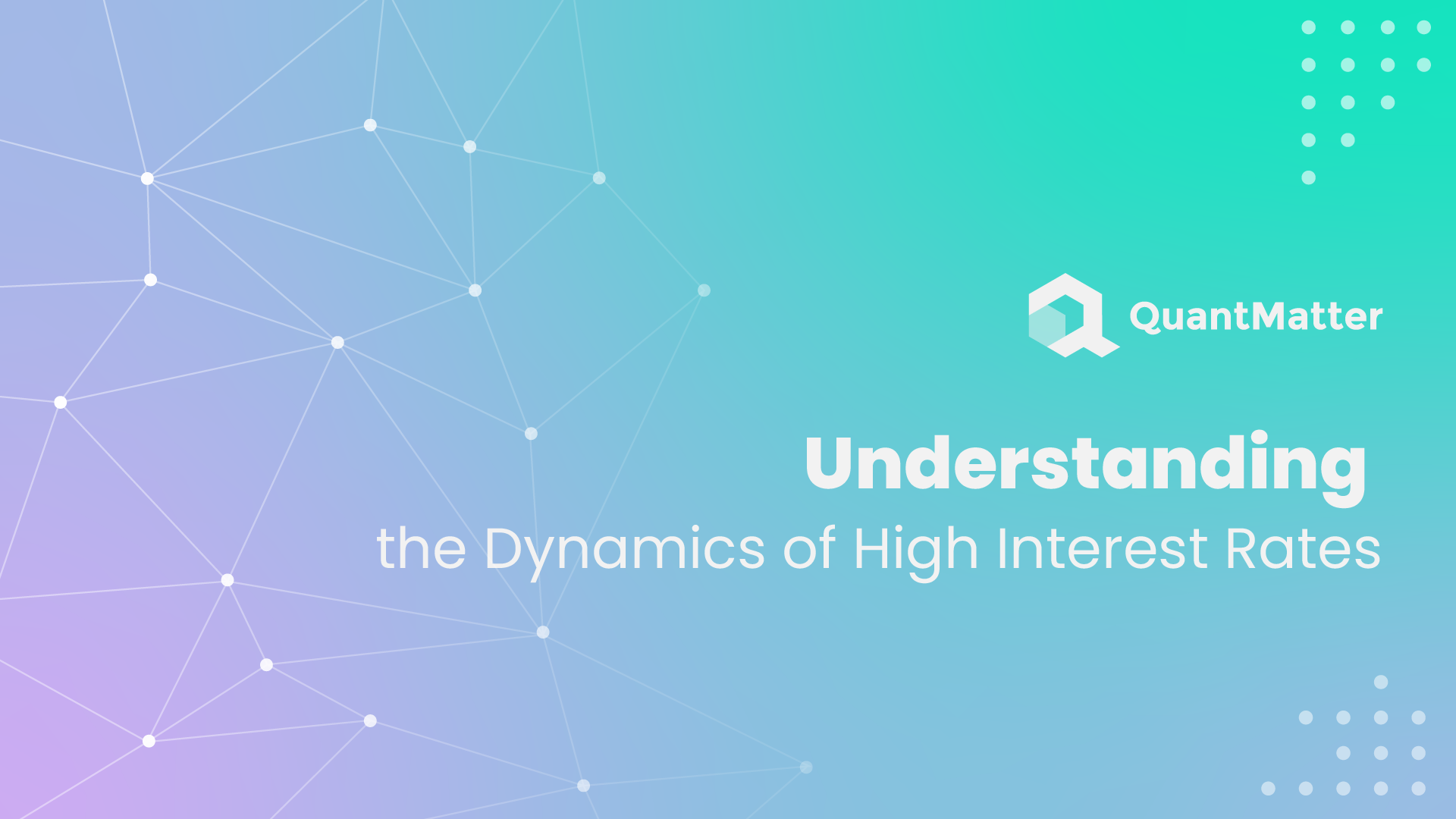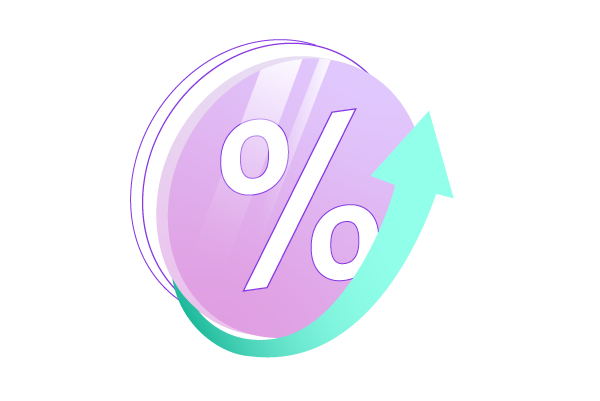
High interest rate are one important part of the financial environment that has a major impact on both people and businesses. High interest rate are an important layer of the financial world, with far-reaching effects on economies, businesses and people. However, the dynamics of interest rate are inseparable from broader economic conditions and monetary policies as well as global market forces. Theirs are waves which may affect many aspects of economic life–borrowing costs, investment decisions and overall vitality. In such an environment, to make sound financial decisions it is imperative that one study carefully the subtleties of interest rate dynamics and their broad impact.
Individually, high interest rate have a lot to do with borrowing and spending. Should interest rate rise, the costs of borrowing increase, and affect mortgages (or house loans), car loans or credit cards. This in turn may reduce consumption of goods and services, as consumers face higher monthly repayments combined with the rising real cost of borrowing. Higher costs repercussions Businesses, too are indirectly affected as higher borrowing can slow investment plans and restrict expansion efforts. On the other hand, low interest rate mean that taking out a loan is less expensive. For consumers and businesses alike it may serve to stimulate more lending for needs of all kinds. These rates are a means of regulating economic activity, but they present real challenges and opportunities. Today we will examine high interest rate in greater detail, looking at how they affect people and why the rate itself fluctuates up or down. Furthermore, readers can find out what one should do to prevent being ruined by them.
Understanding the Dynamics of Interest Rate

Interest rate are the linchpin of financial markets and also a central factor in the greater economic landscape. The factors that shape their evolution exist on many levels, which entail subtle interaction between each other. Economic considerations lie at the heart of this complexity. Central banks use interest rate as a tiller to steer through economic terrain. In periods of economic growth, these fin ancial institutions could choose to increase benchmark rates in advance so as not to be caught off guard by inflationary pressures. The target is price stability. In depressed economic times, interest rate are lowered to stimulate borrowing and spending–to rescue the economy.
The influence of interest rate, however, does not stop at economic indicators. Therefore, the possibility of bankruptcy becomes one major factor that lenders take into consideration when calculating interest rate. Those with better ratings face lower interest rate, due to the reduced risk perception of non-repayment. The linkage between credit risk and interest rate highlights the role of financial health in securing advantageous lending terms.
Finally, the general theory of money involves another important principle–the time value of money. According to this principle, a sum of money available today has more value than the same amount in future. The rate of interest serves as a corrective mechanism for the opportunity cost incurred by employing funds immediately, rather than saving them and using themlater.
Also Read: Market Maker Options: Definition and How They Make Money
Global factors add a veneer of complexity to interest rate dynamics. International market factors, currency exchange rates and geopolitical news can have ripples that affect interest rate across continents. Global Economic Shocks The changing interest rate of one country can have repercussions that reverberate all over the world.
One more aspect of interest rate dynamics is the yield curve, in which optical representations (such as graphs) are used to represent embossments for varying terms. A typical yield curve slopes upward, so that longer-term interest rate are higher than short. On the other hand, an inverted or flat yield curve suggests economic uncertainty (or a likely recession).
Therefore, interest rate dynamics are caught up in a tangled web of economic factors as well. To be equipped for sound financial decision-making and to surf the waves of change which roil every era, a clear understanding of these complexes is essential not only among ordinary citizens but also businesspeople as well as government policymakers.
Economic Impact on Interest Rate

High-interest rate have a powerful influence on consumer spending and investment that is vital in guiding economic trends. The cost of borrowing rises as interest rate increase, putting individual consumers and businesses alike off. The crux of this phenomenon is that higher interest rate put the squeeze on people’s ability to borrow, forcing consumers especially into a nettling mind-set about making big purchases such as homes and cars. At the same time, enterprises find financing for expansion or new projects is less economically feasible. Investment activity therefore slows down further
On the other hand, when interest rate fall then an environment emerges conducive to increased consumer spending and heightened business investments. This makes borrowing more affordable, encouraging individuals to make large purchases and businesses to expand. Reduced financing costs boost economic activity by luring consumers to borrow whenever interest rate are low, and enticing companies to make use of cheap funds. This cycle of ramped-up spending and investment adds to economic vigor.
It should be pointed out that the effects of interest rate go far beyond their direct impact on consumer behavior or business investment. For instance, the housing market is especially sensitive to changes in interest rate. Higher rates reduce demand for mortgages and affect housing purchases, which can slow the real estate sector. But lower rates can also spur demand for housing, which strengthens the real estate market.
In addition, the stock market is very closely tied to interest rate movements. Rising interest rate may cause investors to review their portfolios, moving assets around in response to a changing economy. On the other hand, low rates may attract investors looking for a better return and lead stock prices higher.
In the end, therefore interest rate are a crucial factor in molding consumer behavior and business investment as well that of different quarters (or sectors) of the economy. Gaining an insight into these dynamics is crucial for anyone, any business and society at large as they seek to understand the complexities of economic choice in this changing financial world.
8 Effective Interest Rate Strategies for Individuals

Interest rate strategies for individuals are integral components of effective financial management, particularly in a dynamic economic landscape. These strategies empower individuals to navigate challenges and seize opportunities presented by fluctuating interest rates. Let’s explore these strategies in greater detail:
1. Refinancing Loans
Refinancing loans is a smart financial move that involves restructuring existing loans with new ones containing more advantageous terms. This can be especially effective with respect to mortgages. For example, homeowners may decide to refinance their mortgages and take advantage of lower interest rate on the market.
Through this they can reduce their monthly mortgage payments as well as the total interest repayable over the life of car loan. Nonetheless, consumers have to determine whether the costs involved in refinancing-closing fees and any prepayment penalties-justify a refi. Further, such a strategy can be applied not only to mortgages but also in refinancing car loans or personal loans.
2. Debt Prioritization
Debt prioritization is a way of arranging debts that are outstanding, and targeting those with interest rate highest at the top. One common approach to debt prioritization, called the debt avalanche method t This strategy minimizes the overall interest paid over time. People can speed up the process of getting out of debt by paying off high-interest debts and then freeing financial resources for other things.
Using this method requires strict self-discipline and payment of higher sums towards high interest rate of debts while maintaining minimum amounts on others. The psychological and financial payoffs of this strategy are enormous. First, consumers may feel a sense of accomplishment in seeing their high-interest debts evaporate quickly; secondly by doing so they’re establishing an important foundation for attaining other broader financial goals.
3. Budgeting and Financial Planning
Budgeting and financial planning are crucial to sound financial management. The process of budgeting therefore means formulating a detailed plan with income, expenditures and savings laid out neatly. This gives people an overall picture on their finances at any given moment in time.
Financial planning goes beyond day-to-day budgeting and involves a wider outlook, incorporating long term goal such as housing purchase or college funding in one’s plan for the future. An early start in financial planning means that people can spend money doing things they enjoy and save where they want to. It further helps them make better decisions about their spending, thereby promoting all-around good health of finances.
4. Diversification in Investments
The diversified investment portfolio is a sophisticated strategy for investing in different asset classes to reduce risks. For interest rate strategies, diversification is important in insulating investment returns from the impact of fluctuations in interest rate.
When interest rate rise, traditional fixed-income investments like bonds will see their returns come under pressure. So owning assets less vulnerable to rising interest rate, e.g., equities, real estate or alternative investments can make the portfolio more stable as a whole. It is necessary to pay attention appropriately toward individual risk tolerance, investment objectives and market conditions with this strategy. Further it reminds us that successful investing must take a comprehensive look at the total securities portfolio in order to succeed long term.
5. Consideration of Tax-Advantaged Investments
Tax-advantaged investments are a method of maximizing returns while reducing taxes paid. Tax-favored vehicles of investment, for example those in the United States with Individual Retirement Accounts or 401(k) plans provide special tax advantages.
What’s more, contributions to these accounts may be tax-deductible; earnings within the accounts grow on a tax deferred basis. Tax-advantaged investments can only be used effectively while also considering investment decisions in the broader context of tax planning. This method leads to higher total after-tax returns and makes a more tax-efficient way of accumulating wealth.
6. Emergency Fund Establishment
Building up an emergency fund is essential to financial planning, and allows you a fallback just in case. This fund normally consists of three to six months’ worth of living expenses kept in liquid form and readily available for use.
An emergency fund is an essential cushion, providing a way for people to pay unanticipated expenses like illnesses and job loss without going into heavy debt. Achieving an emergency fund means habitual savings and prudent spending, the existence of which adds to financial self-confidence.
Also Read: Market Making: Strategies and Techniques
7. Monitoring Economic Indicators
Being well informed about economic conditions and interest rate trends is a pre-emptive tactic to help people make good financial decisions. Through central bank announcements, economic reports and inflation indicators we can get a glimpse into possible changes in interest rate policies.
This information enables people to anticipate changes and tailor their financial plans accordingly. Dedication to staying on top of the wider economic environment and then using this information advantageously across a dynamic spectrum of changing market conditions is required in monitoring economic indicators. It is a process that builds financial literacy and allows for prompt adjustments of the plan.
8. Adjustable-Rate Mortgage (ARM) Consideration
The choice of mortgage type is a big decision for everyone, but an Adjustable-Rate Mortgage (ARM) has distinctive pluses and minuses. Normally the interest rate for Arm is cheaper than a fixed-rate mortgage, which gives it even greater appeal to those planning on selling their home within two or three years’ time. But ARMs carry the risk of interest rate rising in time, which could mean higher monthly checks.
Choosing to rely on an ARM requires individuals to carefully consider their own financial goals and how much risk they are willing accept, taking into account the state of current market conditions. One needs to understand completely the terms of the mortgage, evaluate how well one can handle future rate adjustments.
Conclusion
High interest rate bring challenges, they also offer opportunities which require an active and well-informed mindset to take advantage of. Some practical strategies employed by individuals include refinancing existing loans, paying priority attention to the repayment of high-interest debt and exploring other investment vehicles less sensitive to changes in interest rate. Businesses can also adjust their financial plans, control cash flow carefully and evaluate the rationality of projects based on changing borrowing rates. For well calibrated decisions in a high interest rate of environment, careful attention to economic indicators, central bank policies and global market trends is key.
But basically, high-interest rate are not just numbers on a chart. They’re actually like an earthquake rumbling away at the depths of financial landscapes. In such an environment, individuals and enterprises must understand the interdependence of economic elements. They need to watch interest rate movements on a two-way basis while making changes in line with current conditions. In this way, they can not only survive the difficulties of high interest rate but also discover paths to strategic financial growth and strength in their civil society.
Disclaimer: The information provided by Quant Matter in this article is intended for general informational purposes and does not reflect the company’s opinion. It is not intended as investment advice or a recommendation. Readers are strongly advised to conduct their own thorough research and consult with a qualified financial advisor before making any financial decisions.
I craft stories that make complex ideas clear. I simplify the blend of data science, machine learning, and crypto trading, showcasing how advanced tech and quantitative models analyze data for informed trading choices. Join me in exploring the realm of quantitative trading, where my narratives make intricate concepts easy to grasp.
-
Alifia Berizkyhttps://quantmatter.com/author/alifia-berizky/
-
Alifia Berizkyhttps://quantmatter.com/author/alifia-berizky/
-
Alifia Berizkyhttps://quantmatter.com/author/alifia-berizky/
-
Alifia Berizkyhttps://quantmatter.com/author/alifia-berizky/

